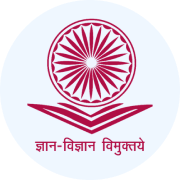Sample Reading Comprehension - 6 | Reading Comprehension for UGC NET PDF Download
Directions: Read the passage and answer the questions that follow:
Paragraph 1: The automotive industry is quietly but resolutely preparing for the electric vehicle (EV) revolution. No less than 22 original equipment manufacturers (OEM) for automobiles have registered themselves as EV manufacturers in the last three years and they plan to manufacture 77 EV variants. At the same time, we have seen a lot of debate about India’s EV vision. The dominant belief is that India will need both internal combustion and EV technologies to survive and coexist. There are many reasons for this belief to have taken shape; but this piece aims to focus on the issue of batteries.
Paragraph 2: Whether it is pure EVs or hybrids, the one thing common among them is the battery— what really makes the vehicles electric. The lithium-ion batteries, based on various chemistries of lithium, are widely considered to be a long-term constituent of all EVs. However, the EV vision often assumes that batteries will be available in plenty at unprecedented low price points, and this hypothesis in turn assumes that the basic constituents of lithium-ion cells will always be available in surplus. Often, the unappreciated risk to any growth story is the strain on resources that are critical for driving growth. A recent A T Kearney study, in fact, firmly establishes that the supply of core elements that make up the lithium-ion batteries, including lithium and cobalt, will increasingly become a cause of concern. While the global supply just does not seem sufficient for cobalt, the ability to mine and extract lithium could prove to be a bottleneck.
Paragraph 3: Not surprisingly, the demand for, and prices of, cobalt have increased steadily since 2016, from less than $30,000 per metric ton (MT) to $60,000/MT. They are now breaching the $90,000/ MT mark. In addition, reports of electronic OEMs attempting to procure cobalt directly from miners indicate a looming supply shortage. Lithium, on the other hand, has demonstrated a similar trend—while prices only doubled from around $4,000/MT to $8,000/MT between 2011 and 2016, they have shot up spectacularly to higher than $16,000/MT levels between 2016 and early 2018. These trends pose a formidable challenge to India as our country depends largely on global markets for supply of these metals. Given the limited availability, it becomes important to look at newer energy storage technologies that can find a use in mobility applications. This could mean non-cobaltbased lithium chemistries or new storage technologies. Also, lithium batteries still have usable life left after reaching the end of mobility applications, which means they can potentially find a second life when they can be put to stationary applications.
Paragraph 4: Planning for reuse of “end-of-life” batteries should, in fact, be a part of any electric mobility business case. Even after second use, batteries will finally come to the end of their useful life. What happens when the internal chemistry exhausts all its cycles? Battery recycling, especially for lithium batteries, is still at an early stage globally. Any economy that aspires to push automobile electrification, among other uses of batteries, will need to think about the economics of end-of-life batteries. In India, the traditional lead-acid battery business successfully created a parallel industry of battery breaking units and recycling. Operating these was relatively easier; but handling lithium and its chemistries is a different ball game altogether. Globally, however, there are some signs of progress in lithium recycling processes. Belgian recycling group Unicore today operates a dedicated recycling facility with a capacity of 7,000 tons per year—equivalent to 35,000 EV batteries. US market leader Retriev, which operates three sites, and Tesla’s Gigafactory, will have on-site recycling and refurbishment facilities. What we need now is to step back and think about creating the ecosystem of enabling businesses that focus on four key factors necessary for EV growth: raw material supply, reuse, recycling and resale.
I. Recycling the lead-acid battery is similar to recycling lithium ones.
II. Re-using batteries is a fundamental part of the mobility business.
III. Recycling lithium batteries is still at an early stage globally.
I. Authoritative
II. Superior
III. Alternative
IV. Heritable
|
6 videos|64 docs|7 tests
|
















